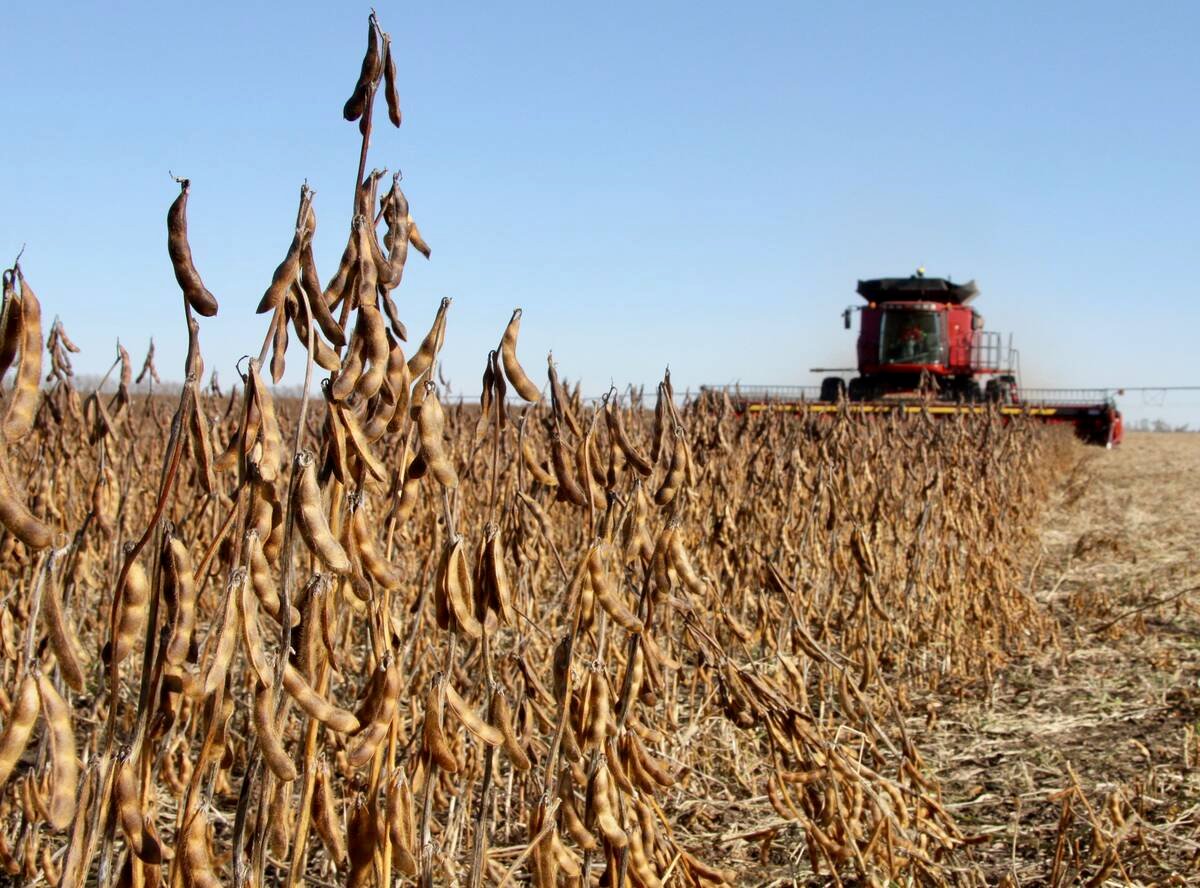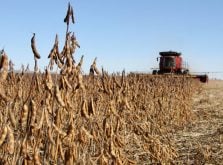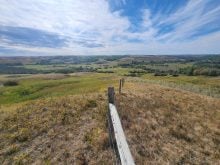REGINA – Saskatchewan land-owners want annual compensation for the inconvenience of farming around power poles.
The lump sum SaskPower pays to the original landowner when a pole is erected isn’t enough, said Miles Vass of Carnduff, Sask., president of the Southeast Surface Rights Association.
He said his group, which represents about 150 landowners, has been fighting for adequate compensation for at least 25 years.
Their main concern is the power supply to oilfields.
“Those poles are put there strictly for a private industry for their production purposes,” Vass said. “I think that we should be compensated for the inconvenience.”
Read Also

U.S. soybean crop was not all roses this year
The USDA is forecasting record U.S. soybean yields but for some growers it was a disastrous year due to excess moisture.
Claims by the oil industry that it can no longer pay higher power rates to subsidize other users, like farmers, coupled with the recent SaskPower rate hike for farm users, is a slap in the face, he said.
More overlapping
“Since 1955 our equipment has likely grown by four to five times,” he explained. “It puts a lot more strain on equipment working around poles. It causes a lot more overlapping and loss of efficiency.
“And for SaskPower to let on as though (the oil industry is) totally subsidizing us without any recognition for what we have done for them (is unfair),” he said.
In the northwest, Clifford Murphy has similar concerns. A councillor for the Rural Municipality of Paynton, Murphy said some quarters of land have as many as three power lines running through them in different directions.
He agreed one-time compensation is not enough.
“It’s been an ongoing battle for probably 30 years,” he said.
Required to negotiate
At a recent rural municipal meeting in Regina, delegates from across the province voted to require crown utilities like SaskPower to negotiate and pay annual compensation to landowners.
SaskPower vice-president of transmission and distribution Roy Yeske said there are no plans to change the way landowners are paid.
“The amount they got paid would vary anywhere from $50 to $200 per structure,” he said. “The reason there’s a variance is it’s based on an assessment of the land use.”
He said landowners would not receive more money if they had the option of annual payments.
“(A one-time payment) simplifies and reduces the cost,” he said. “You can appreciate if we had to initiate a payment every year the administrative cost of that would be a little high. In reality it comes out to the same amount of money.”
Vass said he’s been told that underground cables, which have been installed in many areas, are a long way off for his region.
Don Lang, superintendent of surface land for Wascana Energy, said oil companies appreciate the concern farmers have.
“We’ve had the odd situation where we have been able to remove poles and get underground provided,” Lang said. “They’re very, very happy to have that happen.”















